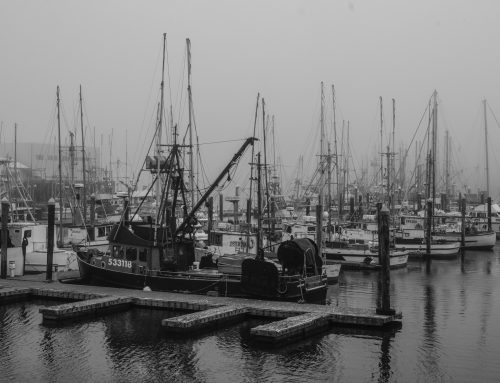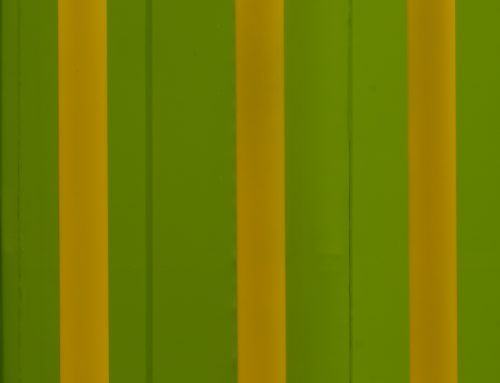©Jack Graham
In a recent issue of Outdoor Photographer Magazine (December 2008), Rob Sheppard wrote an article about 10 tips for better auto focus. It contained really great information for those who use Auto focus (AF) to insure sharpness. Some of the new DSL’s have extensive AF systems that were unimaginable a few years ago. They work great.
However, there are many times (for me more often than not) when the AF system isn’t used at all. Especially for landscape photography, I tend to shoot manually, using my eye and other aspects which I will discuss to make images tack sharp.
A few weeks ago, I was conducting a workshop and a participant asked why though he focuses correctly and uses his Depth of Field Button, to check his DOF but his images still turn out blurry. Well, he had his camera set to auto focus, and when he pressed done on the shutter release the lens went into auto focus mode and refocused the image automatically, thus canceling out all the work he did manually to create the image he wanted.
Rob’s article is definitely worth the read and is extremely useful, but let’s discuss how to best make images sharp manually.
_______________________________________________________________________
So if your new DLSR is so good using auto focus… why and when do I suggest you shoot manually? There are many reasons.
First, I am a nature photographer, not a sports, wedding, or portrait shooter. I almost always use manual focus when taking pictures of landscapes or wildlife. Using manual focus allows me, the shooter to control the shot and if necessary focus on, say a tree instead of the animal as opposed to just the animal itself. In the auto focus mode, this is tough to do, especially when the animal may be in motion. Manual focus is the way to go if you want to clearest images when shooting for nature photography.
This article is not a discussion on hyper focal distance (a term used to identify the point that if you set your focus to in orders to gain the best focus from the front of the image to the back.) I am only talking about making sharp images.
When photographing macro subjects, I again, always use the manual mode of focusing. The narrow depth of field (DOF) requires precision and being just a tad out of focus, or having your camera select the focal point of focus, which my be in the wrong area of your subject, will ruin the image. Manually focusing puts all the decisions in your hands and eyes and if you do it right, manually focusing will allow you will get the right area of the image sharp all the time.
I like to stitch images into panoramas. When doing this you must always manually adjust everything. That means, using the same focal length, same aperture setting and no filtration. For this purpose manual focus is imperative.
In low light conditions cameras sometimes have some difficulty focusing. The newer top of the line DLSR’S are significantly better at this than the ones from just a year or two ago. Using auto focus in low light can trick the camera and sometimes make you miss a shot while the camera & lens are trying to come up with a correct focal length. and exposure in general.
In short, manual focus allows me, the photographer more control in making the image I want.
Though I usually don’t use auto focus, I would if I was just shooting snapshots and quick images in say street photography. If I were a sports shooter I would definitely be using auto focus the vast amount of the time since things are happen very rapidly.
___________________________________________________________________________
OK, now that we have covered that lets talk about getting images sharp when using your camera & lenses manually.
Here are a few things you need to consider.
TRIPODS & TRIPOD HEADS—Tripods are a MUST. The studier the better. There IS NO FREE LUNCH when it comes to tripods. Bad tripod use is so prevalent when I am out in the field or conducting workshops, I sometimes cringe. I actually have a collocation of images depicting bad tripod use.  Some are quite comical.
Some are quite comical.
I have seen folks with $5000.00+ DLSR’s, the best and newest lenses available, either have cheap, light tripods, or worse have good equipment and use it wrong. You must have a good tripod head that matches your needs, as well to maximize the tripod. Don’t go out and buy a $50.00 tripod and a $450.00 Ball head. 
Here is a photographer with a good camera, decent lens, cheap tripod, and 2 of the 3 legs are not even touvhing the ground… why bother? Oh yes the center post……………………
The tripod and head system is the cheapest thing you can do in photography to improve your work.
I recommend any of the heads made by the REALLY RIGHT STUFF ( www.reallyrightstuff.com)
POINT REYES LIGHTHOUSE, California
There was a wind blowing at least 40mph right at me. I was using a Nikon D200 and a 300f4 lens. My Gitzo and BH55 from the Really Right Stuff along with good technique made this sharp.
SOME BASIC TRIPOD USE:
1) NEVER extend the center post. You now have a mono pod, not a tripod. Make sure you’re your lenses uses equipment (lens plates) that locks into the head itself. This not only works for adding a quick connection system to your lenses but to stabilize the entire system (I am referring to “Arca” style plates used by all the top of the line head manufactures).
2) Don’t extend the center post just because it’s more comfortable at eye level.
3) When extending the tripod legs start with to top legs first, extending the last set last, making for greater stability. Also if it’s windy you might want to not spread the legs as wide as possible.
4) If you have to push down on the camera, do so,( again when windy) to increase stabilization
5) If you are using a camera strap, make sure it’s not hitting the tripod or camera in the wind.
6) Some tripod center posts come with hooks on the bottom. You can attach something like your camera bag or a bean bag to this hook to further stabilize your system.
I am not kidding all these things come into play when making sharp images.
USE GOOD TECHNIQUE.
1) Use a cable release whenever possible. If not use your cameras auto timer.
2) Avoid pushing down your shutter release hard, thus creating vibration and movement to the camera itself.
3) I always use the Mirror Lock up function (if your camera has it) when making landscape and macro images. Use your shutter release cable in conjunction to mirror lock up to eliminate any vibration from the movement of the mirror.
4) Never carry your tripod by the center post. This is a good way to destroy thousands of dollars in equiptment ( yes I’ve seen this too)
This is a good way to destroy thousands of dollars in equiptment ( yes I’ve seen this too)
USE YOUR LENS TO MAKE THE IMAGE AS SHARP AS POSSIBLE
1) Purchase the best lenses you can. Some lenses from even Canon & Nikon are better than others. Some have “soft” areas, usually at the corners when “wide open” (f 2.8, f4). Newer lenses are far better than those of just a few years ago. Some diffraction can occur at f11 or higher. It seems to me most lenses perform at their optimum between f5.6 and f11. Do I ever shoot at f22? Well sometimes if I need to. I try and make F16 as small an aperture I’ll use as much of the time as possible.
2) Again, I am not going to get into the hyper focal length discussion, but my goal in landscape photography usually is to make the foreground as sharp as possible as well as the background. If you always focus on infinity, you will not get this result.
3) When shooting animals, bugs, birds and people always make sure the eye is sharp.
ISO SETINGS
1) This one is easy…. Use the lowest ISO you can. Pixel quality diminishes as you gain speed. However the new DSLR’S are pretty remarkable at ISO’s of even 3200!!!
FILTERS:
So now you have this great camera, the best tripod and head, the sharpest lens known to man and you buy a cheap filter. That’s like putting retreads on a Bentley. Cheap filters can decrease sharpness in images just like anything else.
Adding filters can sometimes magnify things like lens flare and degrade the quality of the optics of the lens itself. I only use them when needed.
Because of what you can do in the post processing of your images these days, you really don’t need 81 a’s & b’s anymore. I only carry polarizing filters, graduated ND’s and UV’s.
1) Polarizing filters….. Make sure you have a circular polarizer and know how to use it correctly (yes there is technique to this as well) I would recommend Nikon, B+W, Singh Ray or Lee filters. These are top quality.
2) Graduated ND’s – Singh Ray’s or Lee ( a good understand of how these work are imperative before buying them however)
3) UV filters— I only use these in 2 instances.
First about 5000’ –there is usually not a lot of UV at sea level so why add more glass to a lens?
Second, at the ocean or desert when sand is blowing in my lens. All of my lenses are sealed, Lots aren’t and sand can cause major problems.
I don’t use UV filters to protect my lens….. Except at the ocean and desert.
ONE LAST THOUGHT……
Many of the cameras on the market these days do not allow you to cover the view finder when you depress the shutter. Light can infiltrate the camera from the viewfinder (up to 1 stop in certain situations). Cover the view finder with your finger or something if your camera does not have a shutter curtain. This is a little known but big factor in getting the exposure correct. And if your exposure is off all the sharpness in the works can’t save the shot.
Always check your histogram.
EXPOSURE….….. Now there’s an interesting subject……………………………….
JG










Great writeup Jack! Reminds me of my 10 Tips for Night Shooting post I wrote last year after a photography group outing at night. One more tip I would recommend is to get a camera strap that can be easily removed from the camera (My Calumet strap has snap buckles connect the padded strap to the straps that thread through the neck strap eyelets on the camera body). When taking long exposures, I always unsnap the camera strap so it is not blowing in the windy and adding vibration to the tripod.